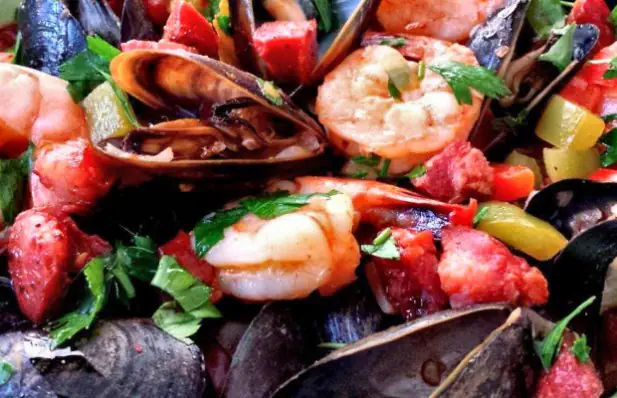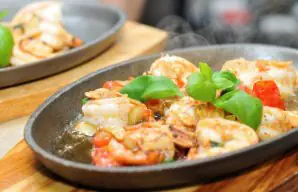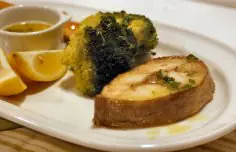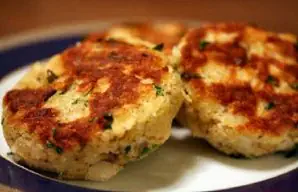Posted on Saturday, January 7, 2017 in
Seafood Recipes
Portuguese Mussels with Shrimp and Chouriço Recipe
This rustic Portuguese mussels with shrimp and chouriço, is meant to be shared with friends and family and served with lots of crusty bread to soak up the broth.
| Preparation time | 5 min |
| Cooking Time | 25 min |
| Ready In | 35 min |
| Level of Difficulty | Very Easy |
| Servings | 4 |
Ingredients
2 tablespoons of olive oil, plus a little more for garnishing8 oz of spicy chourico, chopped 2 cloves garlic, minced1 medium yellow onion, chopped1 small red pepper, diced1 small green pepper, diced1/2 teaspoon of red chili flakesJuice and zest strips of one lemon1/2 teaspoon of smoked paprika2 tablespoons of tomato paste1 cup of Vinho Verde wine or any dry white wineSea salt & freshly ground pepper to taste1 pound of tiger shrimp, peeled and deveined2 pounds mussels, debearded, scrubbed2 tablespoons fresh chopped parsley
Get Portuguese ingredients 
Preparation
- In a large heavy pot over medium high heat, add the oil and heat for about 1 minute. Add the chourico and cook it until it is browned. Remove the chourico into a bowl and reserve. Do not clean out the pot.
- Reduce the heat to medium and add the onions, red peppers and green peppers. Saute until the onions have softened, about 2 minutes. Add the garlic, chili flakes and smoked paprika. Cook for 1 minute. Add the lemon juice and lemon strips. Stir to combine.
- Add the tomato paste and cook, stirring until it begins to darken, about 2 minutes. Add the wine and bring to a boil.
- Reduce the heat to a medium. Season with salt and pepper to taste.
- Add shrimp and mussels to the pot and give it a quick stir. Cover and cook until the mussels open, about 8 minutes. Shake the pot occasionally but don't uncover. Discard any mussels that haven't open and stir in half of the reserved chourico and parsley.
- Ladle mussels and shrimp into a bowl and top with remaining chourico and parsley.
- Drizzle with a little more olive oil and serve with lots of crusty bread to soak up the delicious broth.
Recipe & Photo Credit: myportuguesekitchen.com
Recommended Recipes
Portuguese Sauteed Shrimp (Camarão Salteado) Recipe
This delicious Portuguese sauteed shrimp (Camarão Salteado), with lemon, and garlic, is very easy and quick to make.
| Level of Difficulty | Very Easy |
| Servings | 4 |
Portuguese Grilled Grouper (Garoupa Grelhada) Recipe
How to make Portuguese grilled grouper (garoupa grelhada), with lemon and butter sauce with coriander.
| Level of Difficulty | Easy |
| Servings | 4 |
Simple and Delicious Portuguese Fried Cod Cakes Recipe
This simple and delicious Portuguese fried cod cakes recipe is very simple to make, enjoy.
| Level of Difficulty | Easy |
| Servings | 4 |
Comments
There are no comments for this recipe.



